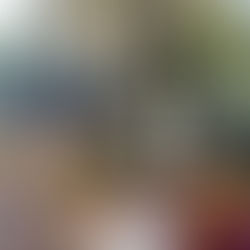Step Back in Time - Take a Walk Around Memory Lane
- Your Hunter Valley Magazine
- Sep 14, 2020
- 3 min read

There are many ways to learn more about the heritage of a region, from thumbing through the pages of a reference book to listening to a talk from a local history group. But when it comes to the coalfields town of Kurri Kurri, a trip down memory lane is a far more visual experience. The town and surrounding villages are home to more than 60 brightly-coloured murals, which adorn once vacant walls on everything from local pubs and main street shops to the grandstand at Kurri Kurri Sportsground.
The murals commemorate various aspects of the region’s history, from Kurri Kurri’s coal mining past to its sporting community, pioneering population, cultural pastimes and industrial heritage, with every painting also including the symbol of Kurri Kurri – a kookaburra.
The urban art initiative was created by the Towns With Heart committee, a community group formed to develop projects that attracted more visitors to the town, diversify employment opportunities and create and support events that promote the area.
The mural project began in 2003, and 16 years later it is considered one of the area’s key tourist attractions. Travellers from across the state and much further afield regularly stop off to view what is recognised as the largest collection of outdoor art on mainland Australia, with Kurri Kurri now one of the best-known mural towns in the world, A handy mural map, available at the Kurri Kurri Visitor Centre, allows tourists to undertake a self-guided tour of the artworks, which are predominantly grouped around the town centre, while groups can also book in to undertake a one-and-a-half hour guided tour.

One of the most striking murals on the tour is painted on the side of The Station Hotel as you first come into Kurri Kurri, recreating a famous photograph taken by Newcastle Herald snapper Darren Pateman.
The photograph was captured during coverage of the bushfires around Abernethy and Kearsley in October 2002 and shows a group of cricketers playing on while a fire rages in the background. The image was painted on the side of the Kurri Kurri pub as it was the sponsor of one of the teams immortalised in the photograph.
A number of murals delve into the region’s coal mining heritage, including the notorious Rothbury Riot, while others depict everything from wartime heroes and colonial workers to famous local figures including Beating Around the Bush presenter Ian “Beat” Hill.
The latest addition to the collection is hard to miss for anyone taking the Loxford exit of the Hunter Expressway, with a towering three-panel mural on the side of Hart Road painted by Caves Beach artist Daniel Joyce.
The mural, number 61 on the list, celebrates the major role the now-closed aluminium smelter played in the economic development of Kurri Kurri for more than four decades. The smelter, known throughout the years as Hydro, Alcan, Capral and VAW, operated from 1969 to 2012 and employed more than 500 people at its peak.
Images depicting day-to-day life at the smelter, as well as its instantly distinguishable skyline, were included in the symbolic artwork.
A new mural has also been proposed in the grounds of the Kurri Kurri Hospital on the wall of the upgraded surgical theatre, with the artwork to be based on a number of historical photographs including an iconic image of the hospital’s horse and cart ambulance, which was taken in 1913. Other murals in the planning stage include a Women of World War I artwork, as well as a new town entry mural at Neath.
For more information about the Kurri Kurri murals or to download the walking mural map, visit www.visitkurrikurri.com/events-attractions/kurri-kurri-murals









































































































